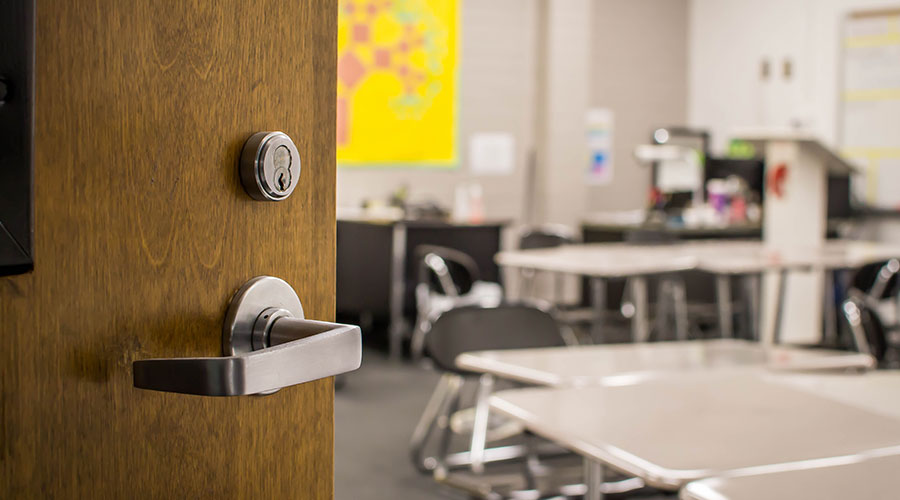Analyzing Facility Security Needs a Five-Step Process
Analyzing facility security needs related to door hardware is a five-step process, according to security experts. They include:
- Define assets to be protected, including people, contents and the facility itself. Managers can use this information later to evaluate the risk severity and countermeasures needed.
- Assess potential threats using past incidents, loss records, safety records, insurance-adjuster experience, legal judgments, and crime rates for the nation versus the area. Categorize threats as probable, possible, or unlikely, and by severity as catastrophic, moderate, or of little consequence.
- Determine the facility's vulnerability level. Management should construct a breach of security event step by step and estimate the time required for each step.
- Select security measures. The options are a combination of electronic and physical barriers, personnel, and policies and procedures. The policy is the philosophy that management wants to employ, e.g. effective deterrence, and procedures are the steps required to implement the policy.
- Implement the program by transforming the above recommendations into specifications for people, systems and policies and procedures.
The foundation for an effective security system is deterrence, and time is the greatest friend of deterrence. Managers should evaluate every security measure by answering the question, "How does this measure increase the degree of difficulty and time it will take a motivated intruder to breach it?"
A bump key takes seconds, so a countermeasure that slows this process, such as a bump-deterring lock mechanism, is the solution. Lock bumping can be defeated with modified BHMA/ANSI 156 standards series mechanism that combines warnings, high-security, restricted keyways, and side-locking bars that eliminates the pin and tumbler. A latch that can be opened by sliding a card along the door edge or a door smashed from the frame with a ram or foot, can be replaced with more tamper-proof and reinforced jambs and hardware to defeat these attempts. Examples include a 1-inch deadbolt extension and longer screws and an extended striker plate. A warehouse door that can be rammed with a vehicle to gain entrance can be blocked with a loading dock or guarded with concrete bolsters thwart such an event.
Security in large organizations must make sure the cardholder is the person to whom the card was issued. A biometric reader and card combination fill this need. The picture-identification magnetic swipe or proximity card contains all the identification data, including fingerprints.
Next to the card reader at the entry point is a fingerprint reader. The user places all five fingers flat on the reader and the card and fingerprints must match in order to authorize entry.
Thomas A. Westerkamp is a maintenance and engineering management consultant and president of the work management division of Westerkamp Group LLC.
Related Topics:













